Audemars Piguet, Girard-Perregaux, Patek Philippe, Rolex and Universal Geneve are among the watch brand names with international recognition. They also share 1 other distinction, namely that they can be called "Geneve" or "Geneva" watches. Geneva, Switzerland, is known as the watch capital of the world. The term "Geneve" or "Geneva" watches is synonymous with timepieces of impeccable craftsmanship and manufacturing.
Early History
In 1541, the religious reformer, John Calvin, banned the wearing of jewelry in Geneva. Goldsmiths and silversmiths were forced to adapt their trades accordingly. They switched to watch making. By 1790, Geneva was exporting more than 60,000 watches annually. The Geneva turnaround was a landmark that would be the foundation for international success in the years to come, for individual watchmakers and for Geneva's state-of-the-art watch-making industry.
Audemars Piguet
Audemars Piguet has been in the watch business since 1875. During their early history, the company specialized in chiming watches. In 1892, they created the world’s 1st-minute repeater wristwatch and, 2 years later, the minute-repeater jewelry pendant watch. In 1918, Audemars Piguet enjoyed major success when it introduced women’s wristwatches set with precious stones. The company created the stellar “Femmes du Monde” line almost a century later, in 2004. Audemars Piguet is also known for manufacturing the world’s thinnest wristwatch in 1948. More recently, in 2007, Audemars Piguet created the spectacular "Millenary Precieuse" line of eveningwear watches (see link in References).
Girard-Perregaux
Girard-Perregaux was born when Jean-Francois Bautte created his first, ultra-thin timepieces in 1791. He was the quintessential watchmaker, but he was also a far-sighted entrepreneur who established a factory with all the necessary crafts under one roof. The company’s timepieces were the choice of royal courts throughout Europe. In 1867, the company introduced its celebrated Tourbillon model, which took the gold medal at the Universal Exhibition in Paris. In 1889, the signature Tourbillon With 3 Gold Bridges received the gold medal. It would be re-introduced in later years with equal success. Girard-Perregaux’s subsequent milestones include manufacture of the first high-frequency movement in 1966, a new range of ultra-thin movements in 1994 and the launch of the World Wide Time Control model.
Patek Philippe
In 1851, the partnership between Antoine Norbert de Patek and Jean-Adrien Philippe resulted in the renaming of the company to Patek Philippe. In 1867, they would produce the first wristwatch and, the following year, a jeweled watch with a baguette movement. In 1901, following the deaths of the 2 principals, Patek Philippe became a limited company. By 1927, the company had created the 1st wristwatch with a perpetual calendar. By the next decade, they were selling the first wristwatches with worldwide times. In the millennium year, they created "the most complicated pocket watch in the world" in the form of the Star Caliber 2000. The Patek Philippe Company chronicles details of every watch made since 1839 so that a complete history is available to each customer.
Rolex
Rolex was originally founded in London but moved to Switzerland in 1914. Among its most famous watch models is the Oyster, developed in 1926, and the first air, dust and waterproof watch. The Oyster Date was introduced in 1945. In 1953, the Explorer model took the stage, followed by a succession of innovative creations. By 1967, the Rolex Sea-Dweller was available for divers with the guarantee of matching depths of up to 4,000 feet. Rolex is synonymous with visionary technology and innovation. The company has ensured that its high standard is perpetuated through watchmaking schools in Switzerland, Japan and the United States.
Universal Geneve
Universal Watch was founded in 1894, but it was not until 1919 that the company was based in Geneva. Between 1935 and 1937, "Universal" became the registered name, and "Universal Geneve" the registered brand. The company introduced the "Compur" and "Compax" models during the same period, to a highly enthusiastic reception. In the 1950s, Universal Geneve concentrated on the production of thinner automatic movements. In 1966, the "Golden Shadow" made its debut, followed in 1975 by mastery of the thinnest analog quartz movement worldwide. During the 1940s, Universal Geneve was dubbed "the watch couturier," an evergreen title exemplified by subsequent creations, such as the water-theme line, the Anthea Collection.
Related Articles

The History of Pulsar Watches

How to Tell if a Waltham Watch is ...

Sector Watch Instructions

Marc Ecko Watch Instructions

How to Change the Date on a Luminox 3080
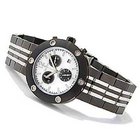
Croton Watches History

How to Adjust a Movado Watch

How to Change the Date on a Skagen Watch

How to Wind a Woman's Manual Cartier ...

How to Set the Time on a Kenneth Cole ...

How to Set a Stauer Watch

Difference Between Swiss & Japanese ...
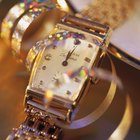
How to Set the Time on a Rolex Daytona
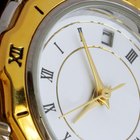
How to Set a Rolex Day-Date

Pulsar Chronograph Watch Instructions
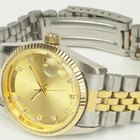
How do I Tell a Fake Omega ...

How to Replace a Nike Triax 50 Battery

History of M&M's Candies
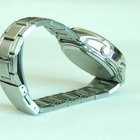
How to Set a Festina Watch

The First Converse Shoe
References
Writer Bio
Based in Northern California, Maureen Katemopoulos has been a freelance writer for more than 25 years. Her articles on travel, the arts, cuisine and history have appeared in publications such as "Stanislaus Magazine," "Orientations," "The Asia Magazine" and "The Peninsula Group Magazine." She holds a Baccalaureate degree in journalism from Stanford University.